
Energy and Water

Rehabilitation of the Lower Limb Motor Skills for Patients Using Cable-Driven Robot
As the technological advancements in felid such as electronic, robotics, and artificial intelligence continue to grow and flourish, the more the traditional methods of doing things starts to get absolute. This phenomenon cannot be more clearly observed in like medicine, technological advancements changed the ways things are done from the way that the doctors preform their surgical operations to the way they prescribe pills and after surgery treatments. The purpose of this work is to develop a low-cost cable-driven manipulator robot to be used in the rehabilitation of human lower limb problems
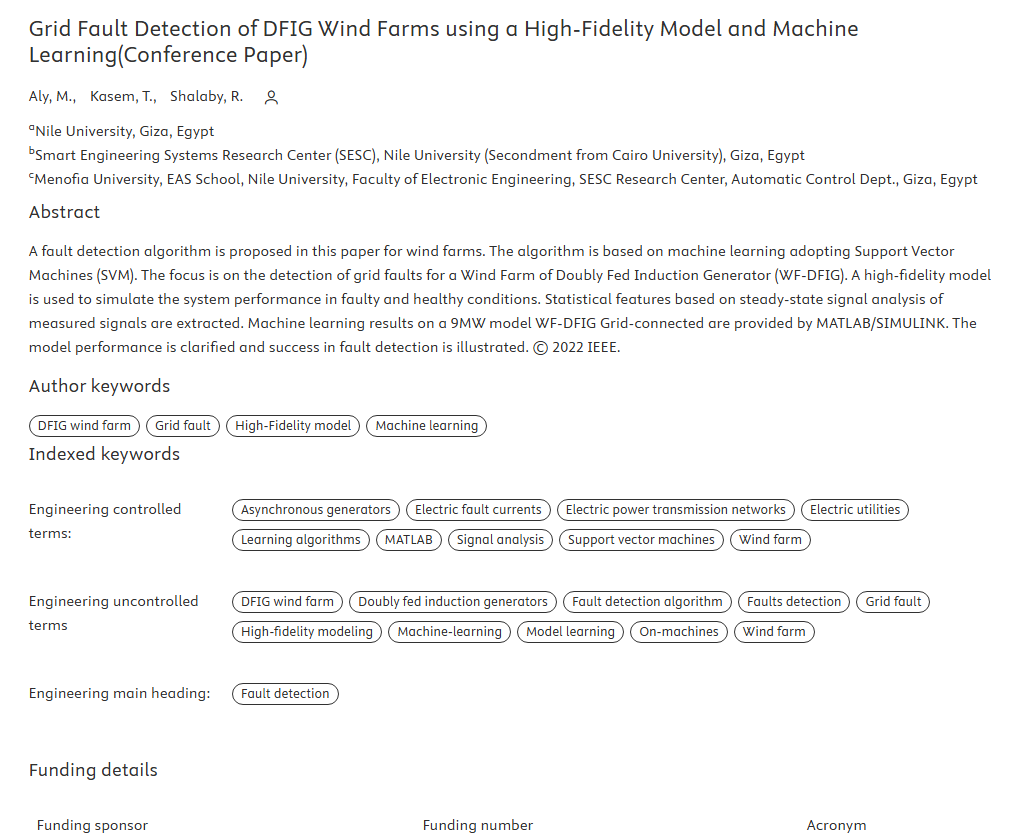
Grid Fault Detection of DFIG Wind Farms using a High-Fidelity Model and Machine Learning
A fault detection algorithm is proposed in this paper for wind farms. The algorithm is based on machine learning adopting Support Vector Machines (SVM). The focus is on the detection of grid faults for a Wind Farm of Doubly Fed Induction Generator (WF-DFIG). A high-fidelity model is used to simulate the system performance in faulty and healthy conditions. Statistical features based on steady-state signal analysis of measured signals are extracted. Machine learning results on a 9MW model WF-DFIG Grid-connected are provided by MATLAB/SIMULINK. The model performance is clarified and success in
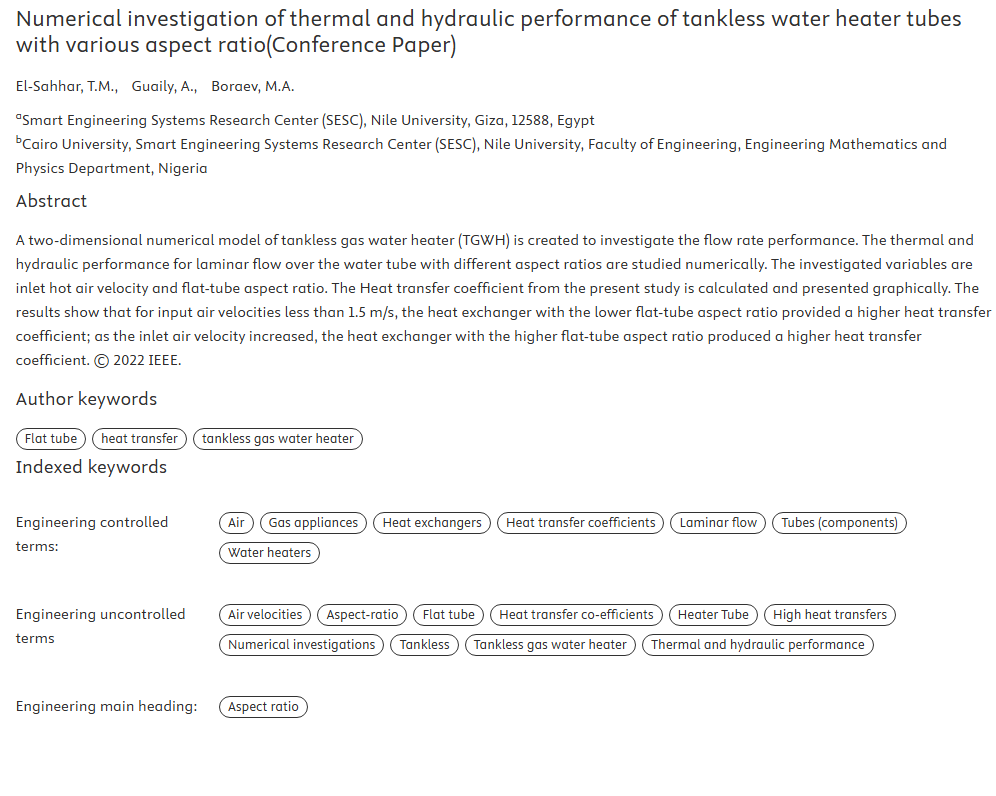
Numerical investigation of thermal and hydraulic performance of tankless water heater tubes with various aspect ratio
A two-dimensional numerical model of tankless gas water heater (TGWH) is created to investigate the flow rate performance. The thermal and hydraulic performance for laminar flow over the water tube with different aspect ratios are studied numerically. The investigated variables are inlet hot air velocity and flat-tube aspect ratio. The Heat transfer coefficient from the present study is calculated and presented graphically. The results show that for input air velocities less than 1.5 m/s, the heat exchanger with the lower flat-tube aspect ratio provided a higher heat transfer coefficient; as
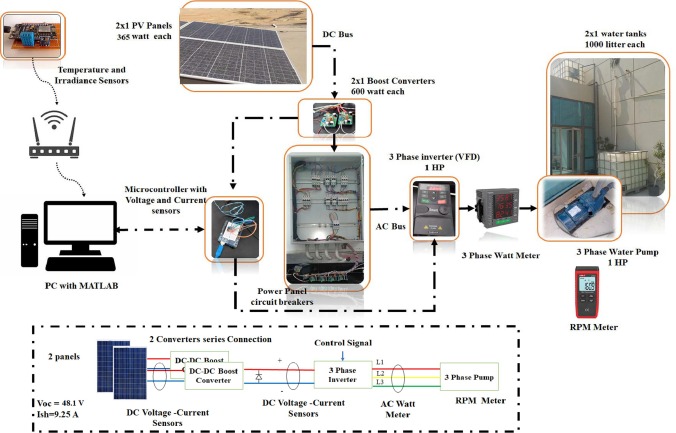
Evaluation of the performance of a FONN-based MPPT control for a photovoltaic watering system
This study aims to increase the effectiveness of photovoltaic pumping systems. A practical installation and cost-effective design are suggested. This paper examines the nonlinear behaviour of photovoltaic generators from a distinct perspective; where it repeatedly transitions between a constant current and a constant voltage source and shows how this affects the behaviour of the induction motors. A Fractional-order Neural Network (FONN) is suggested to forecast the harvested solar-energy. The results showed that FONN improved forecasting accuracy by effectively capturing the nonlinear
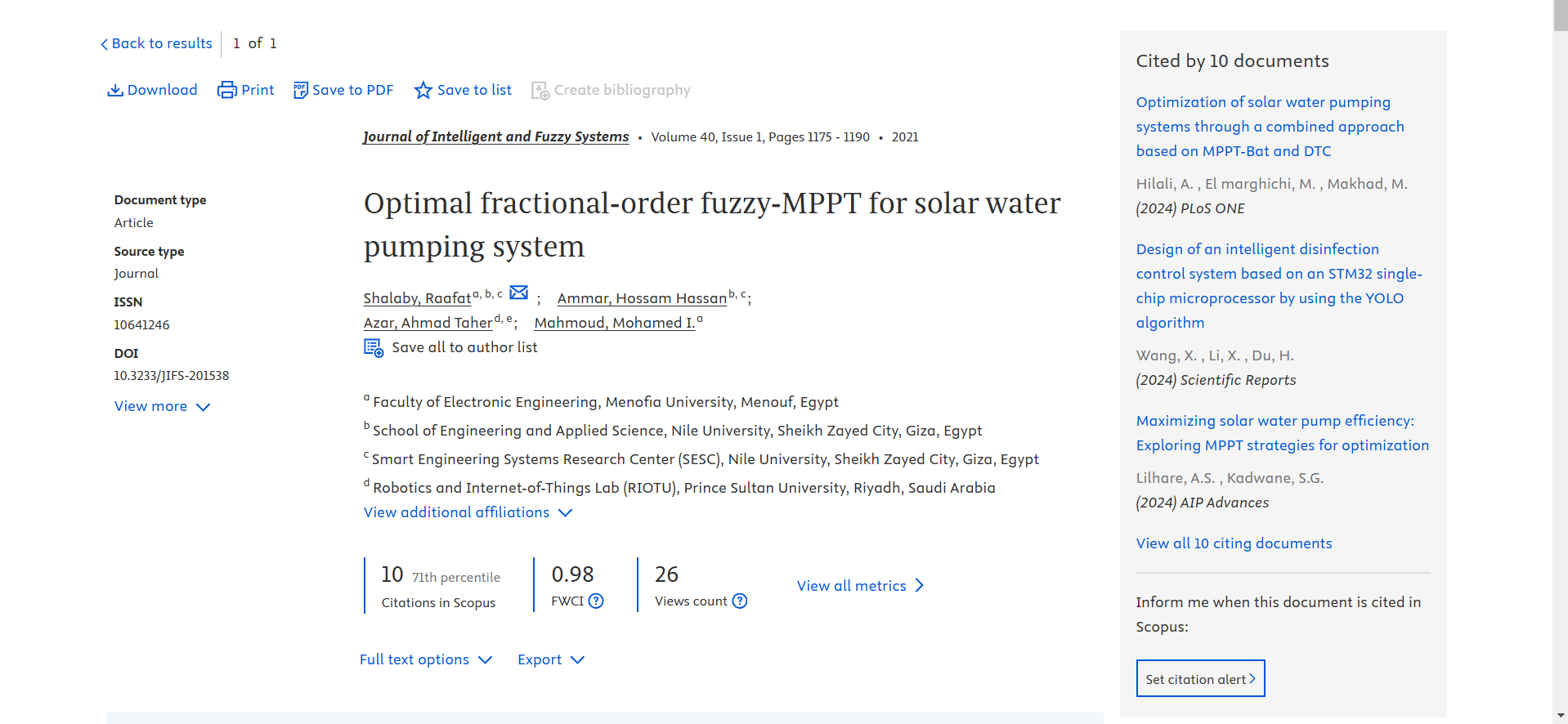
Optimal fractional-order fuzzy-MPPT for solar water pumping system
This paper seeks to improve the efficiency of photovoltaic (PV) water pumping system using Fractional-order Fuzzy Maximum Power Point Tracking (FoF-MPPT) control and Gray Wolf Optimization (GWO) technique. The fractional calculus has been used to provide an enhanced model of PV water pumping system to, accurately, describe its nonlinear characteristics. Moreover, three metaheuristic optimizers are applied to tune the parameters of the proposed FoF-MPPT, Particle Swarm Optimization (PSO), Ant Colony Optimization (ACO) and the GWO. The FoF-MPPT is intensively tested and compared to the Perturb
An Efficient Design and Control Techniques of Photo-Voltaic Pumping System (PVPS)
In this paper, new methods for increasing the efficiency of photovoltaic pumping systems are presented (PVPS). A feasible implementation of battery-free PVPS, as well as a cost-effective design, has been proposed. The variation of the PV power causes its behaviour to transit permanently between the characteristics of constant current sources and constant voltage sources, which is studied in this paper from a new perspective. The inconsistency of PV generator behaviour reveals an unexpected phenomenon in the operation of induction motors (IM). To overcome the effects of fluctuating PV behaviour

Nonlinear analysis of Euler beams resting on a tensionless soil with arbitrary configurations
Background: The nonlinear interaction between an elastic Euler beam and a tensionless soil foundation is studied. The exact analytical solutions of the nonlinear problem are rather complicated. The main difficulty is imposing compatibility conditions at lift-off points. These points are determined as a part of the solution, although being needed to get the solution itself. In the current work, semi-analytical solutions are derived using the Rayleigh–Ritz method. The principle of vanishing variation of potential energy is adopted. The solution is approximated using a set of suitable trial
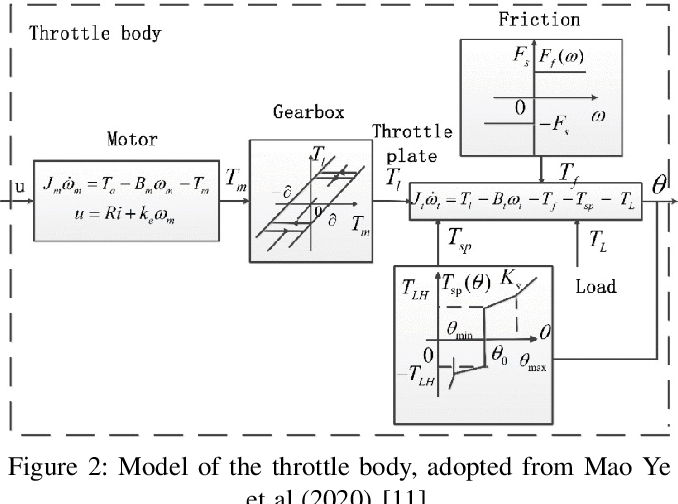
Optimizing Automotive Electronic Throttle Control with a Modified Grey Wolf Algorithm
Electronic Throttle Control (ETC) systems have become increasingly popular in the automotive industry due to their ability to improve fuel efficiency and vehicle performance. However, designing effective control strategies for these systems is challenging due to the non-linearities and external load affecting the throttle gate angle. This paper proposes a novel control approach for ETC systems using a modified Grey Wolf optimization algorithm combined with a fractional-order PID controller. The proposed approach is designed to handle the tuning of the controller's five parameters in the
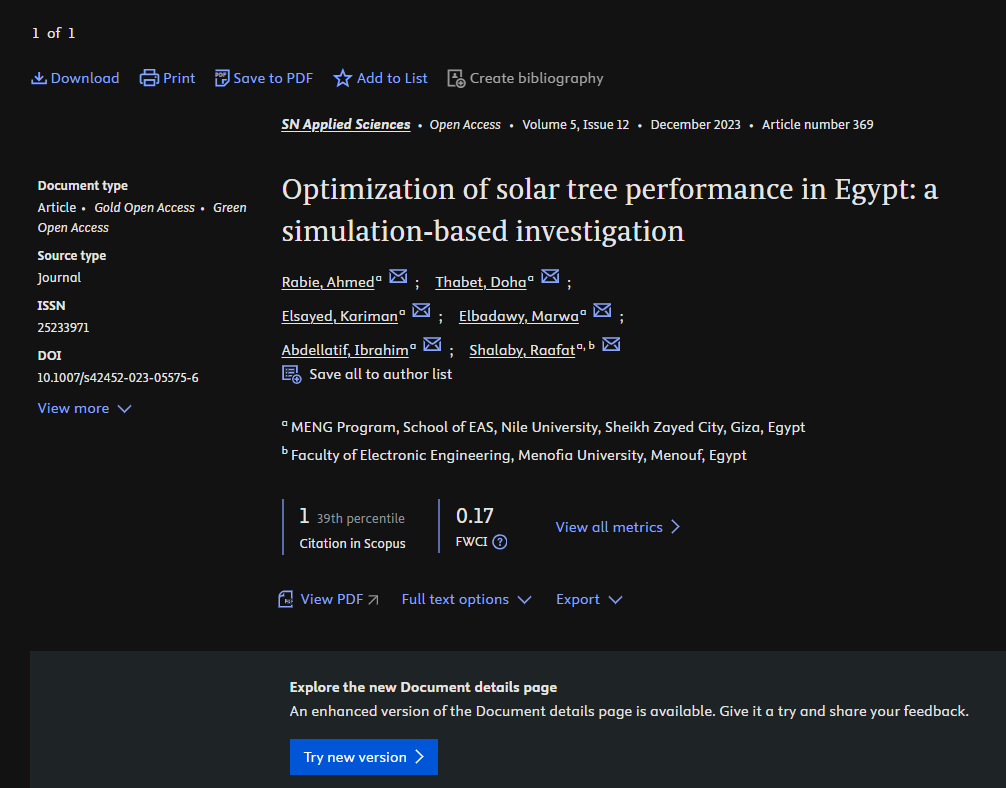
Optimization of solar tree performance in Egypt: a simulation-based investigation
The paper discusses the orientation and positions of solar panels in a solar tree. Solar energy contributes to the most available and abundant energy source in Egypt. Hence, The PV system is considered a promising solution to generate power from this source. However, its energy density is low. Therefore, the solar tree is considered in this paper as it has higher density and fits the urban cities of Egypt. The design of the solar tree is divided into two sections: the study of the solar panel’s orientation and positions. For the solar tree orientation, a single-objective genetic algorithm is

Design and Numerical Analysis of an Open-Circuit Low-Speed Wind Tunnel
The design and numerical analysis of a 3D open-circuit, low-speed, with a maximum velocity of 20 m/s in the test section, wind tunnel is presented. Two diffusers' angels are numerically tested in order to reduce the pumping power of the fan. The proposed design is analyzed using three-dimensional, turbulent, incompressible flow using ANSYS FLUENT. Numerical results show that the velocity as well as the pressure are uniform in the test section and no vortices are formed in the diffuser section which affirms the success of the proposed design. © 2019 IEEE.